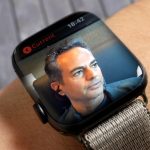Born in the media capital of the world as the Integrated Media Systems Center, we have a storied history of developing new technologies to improve the way we communicate, learn, work, and play.
Quick Links:
Societal Impact
Publications
People
From the editing and writing rooms to distribution and marketing, data science has become a critical tool across every area of media and entertainment. When it was founded, IMSC pioneered enabling technologies for facial capture and rendering as well as augmented reality and immersive journalism. More recently, we have increased our focus on data-driven journalism and the most prolific content generation and dissemination platform: cell phones and social media. To that end, IMSC has pioneered several algorithms, methodologies, and platforms for social media research.
The increases in communication and computational performance of mobile devices, coupled with advances in sensor technology, have led to an exponential growth in data collection and sharing by smartphones. In exploiting the mobility of such a large volume of potential users, IMSC launched a new mechanism for efficient and scalable data collection we call spatial crowdsourcing (SC). In this paradigm, requesters outsource their spatiotemporal tasks (tasks associated with location and time) to a set of workers, who perform the tasks by physically traveling to various locations. We have developed a variety of data management techniques, analytics tools, and end-to-end systems to handle and process user-generated video (UGV) including MediaQ. MediaQ is geared towards for a choreographed media collection using spatial crowdsourcing. For example, when an event is happening in a wide area and news media doesn’t have enough workers to cover the area (or too costly to travel), a media collection task can be generated with specific descriptions (e.g., time, locations, directions, etc.). Then, the task is delivered to the people in the specified area at the specified time so that they can easily participate in the video data collection. The requester will easily search for the right contents using MediaQ’s spatial and temporal search features.
More information on our efforts in data-driven journalism can be found on our Transportation Application Domain page.
Societal Impact
We teamed with Columbia College at Chicago to cover the NATO Summit event. More than 20 Columbia College journalism students covered streets in Chicago during the event using iPhones, iPads, and Android phones as video collecting devices and more than 250 videos were recorded and transferred in real time to MediaQ server at USC during the three day period.


We also partnered with PBS Newshour to use our platform for a new presentation of crowdsourced media content in the experiment of automatically generating 360 degree visualization from independently collected mobile videos. Fifteen journalism students (PBS College Reporting Team) covered the streets in Washington DC during the 2013 Presidential Inauguration using Android phones as video collecting devices and MediaQ as the server for automatic panorama generation from mobile videos on PBS Newshour’s “Inaug Blog” web page.

Selected Publications
“Efficient indexing and retrieval of large-scale geo-tagged video databases”, Lu, Ying Shahabi, Cyrus and Kim Seon Ho GeoInformatica Volume 20, Pages: 829–857, 2016.
“Effectively crowdsourcing the acquisition and analysis of visual data for disaster response”, To, Hien and Kim, Seon Ho and Shahabi, Cyrus “Big Data (Big Data), 2015 IEEE International Conference on” Pages: 697–706, 2015.
“Large-scale geo-tagged video indexing and queries”, Ma, He and Arslan Ay, Sakire and Zimmermann, Roger and Kim, Seon Ho GeoInformatica Volume 18, Pages: 671–697, 2014.
“Active Key Frame Selection for 3D Model Reconstruction from Crowdsourced Geo-tagged Videos”, Guanfeng Wang, Ying Lu, Luming Zhang, Abdullah Alfarrarjeh, Roger Zimmermann, Seon Ho Kim and Cyrus Shahabi “IEEE International Conference on Multimedia and Expo (ICME), July 2014” 2014.
“Frame Selection Algorithms for Automatic Generation of Panoramic Images from Crowdsourced Geo-tagged Videos”, Seon Ho Kim, Ying Lu, Junyuan Shi, Abdullah Alfarrarjeh, Cyrus Shahabi, Guanfeng Wang, Roger Zimmermann “Accepted to appear in Web and Wireless Geographical Information Systems (W2GIS)” (W2GIS ’14), Seoul, South Korea 2014.
“Relevance Ranking in Georeferenced Video Search”, Sakire Arslan Ay, Roger Zimmermann, Seon Ho Kim Multimedia Systems Journal (MMSJ ’10), Springer-Verlag, Volume 16, Pages: 105-125, 2010.
Research
Platforms
Sponsors


People
Faculty
- Cyrus Shahabi (USC Viterbi School of Engineering, Department of Computer Science)
IMSC Research Staff
- Seon Ho Kim
- Luciano Nocera
- Erick Moen
Students
- Ying Lu (Ph.D. Student, CS)
- Abdullah Alfarrarjeh (Ph.D. Student, CS)
- Giorgos Constantinou ((Ph.D. Student, CS), CS)
- Sasan Tavakkol (Ph.D. Student, Civil Eng.)
- Sumeet Agrawal (M.S. Student, CS)
- Akshay Deshmukh (M.S. Student, CS)
- Sina Karachiani(Undergraduate Student, CS)
- Brandon Dalton (Undergraduate Student, CS)
Notable Alumni
- Hien To (Amazon MTurk)
External Collaborators
- Roger Zimmermann (National University of Singapore, Singapore)
- Tobias Emrich (LMU, Germany)
- Joon-Seok Kim (Pusan National University, Korea)






